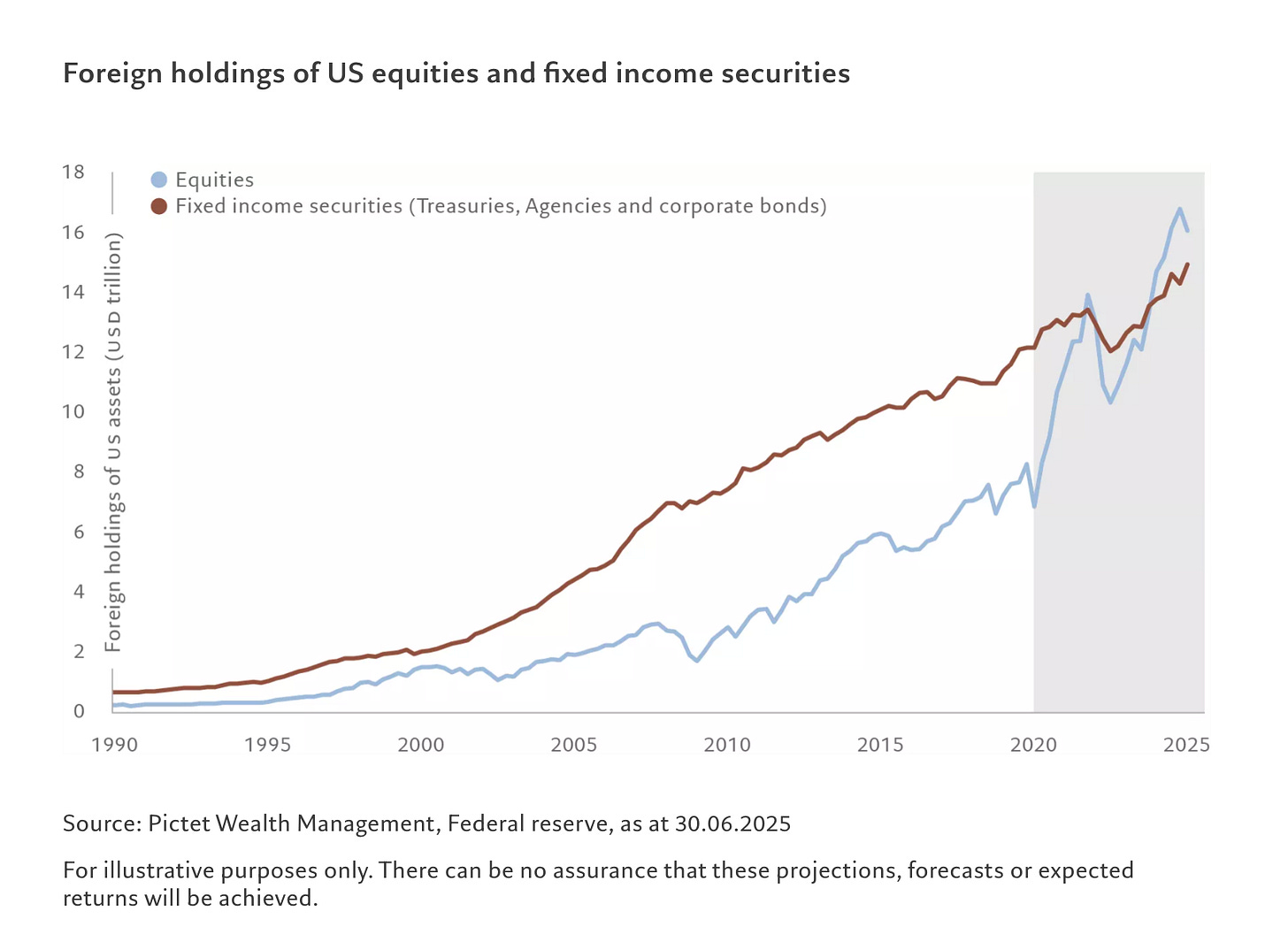The Twin Deficit Myth Lives On
Why cutting deficits won’t fix America’s trade gap
It’s remarkable how persistent the “twin deficit” myth remains in financial commentary.
Pictet Wealth Management recently argued that a lasting reduction in the U.S. external deficit would require cutting the fiscal deficit.
It sounds intuitive — but it’s wrong.
As the late Wynne Godley reminded us, the financial balances of the government, private sector, and foreign sector must always add up to zero.
If Washington borrows less, then by definition either households and firms must borrow more, or the rest of the world must lend less to the U.S. There’s no magic escape hatch.

History proves the point: when the U.S. government ran budget surpluses in the late 1990s, the current account deficit actually ballooned as the private sector levered up.
After 2008, the opposite happened — a surge in public deficits coincided with a shrinking external gap. The arithmetic is simple but often ignored:
one sector’s surplus is another’s deficit.
So if policymakers truly want to fix America’s external imbalance, the solution isn’t austerity.
It’s a coordinated approach that respects the macro ledger — encouraging productive investment, stable private saving, and trade structures that don’t depend on unsustainable debt. Until that lesson sinks in, the twin deficit myth will keep misleading analysts — and policy will keep chasing its own tail.
The idea that lower public deficits automatically shrink external gaps confuses correlation with causation — and history shows the opposite often happens. Sustainable rebalancing requires coherent adjustment across all sectors, not fiscal contraction in isolation.

